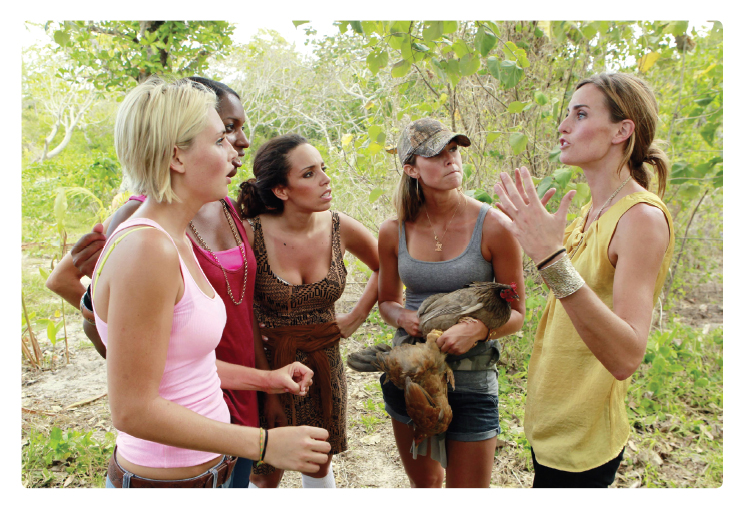Leading with Communication
Competent communication within a group doesn’t just happen; it takes work. This is not the responsibility of a single, designated leader, however. Instead, if all group members communicate openly and competently respond to conflicts, the group can create and maintain a supportive environment.
In the 2012 season premiere of the reality show Survivor: One World, the cast is divided into two tribes—men (the Manonos) versus women (the Salanis). A power struggle quickly erupts within the Salani tribe when Christina, acting alone, makes a deal with the men to trade woven palm fronds for fire. When Christina’s teammate, Alicia, learns of the trade, she verbally attacks Christina. Their argument fractures the group, and the Salanis are required to submit to a tribal council that will determine who will get voted off the team.
Survivor host Jeff Probst begins the tribal council by asking the women who is leading their team. Almost immediately, Alicia and Christina start shouting at each other, revealing a lack of coordination and structure within the team. Another teammate, Monica, describes the tribe as “crazy, total anarchy.” Probst advises the women to coordinate their leadership or face continued trouble within their team.

Although Alicia wasn’t wrong to voice her opinion, the way she communicated her anger only made things worse. Moreover, as things began to spiral out of control, no other Salani tribe member stepped in to manage the conflict. A skillful leader would have encouraged better communication among members and dealt with disagreements before they escalated. This would have helped the Salanis avoid such chaos in the group.
Leading groups requires careful attention to maintaining satisfying relations among members while monitoring and evaluating progress toward completing the given task (Morgeson et al., 2009). To encourage this, group leaders can create a supportive climate, prevent groupthink, and help group members constructively work through the inevitable conflicts that arise.